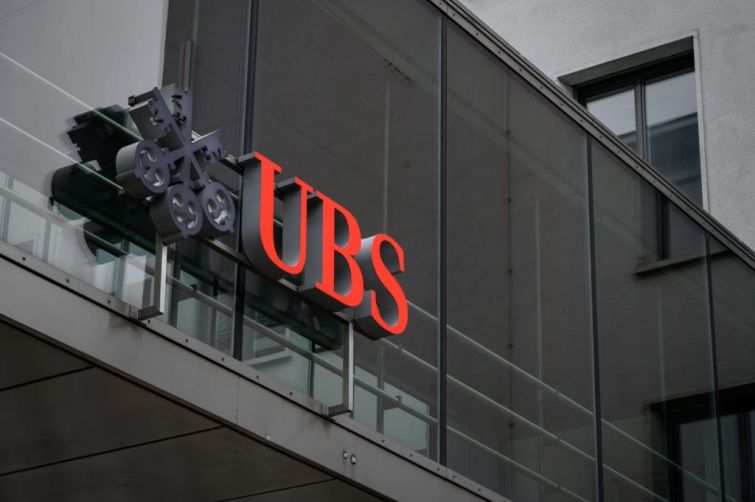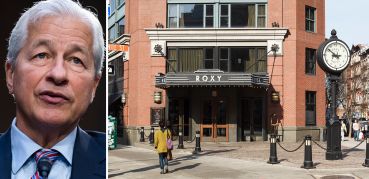Market Reacts to Credit Suisse and UBS Shotgun Wedding
As UBS Buys Credit Suisse, What’s Next for CRE?
By Brian Pascus March 20, 2023 1:46 pm
reprints
The sudden purchase of Credit Suisse (CS) by rival UBS over the weekend stunned the finance world and created new questions about the true extent of a banking crisis that began with U.S. regional banks and now has a global shadow.
UBS acquired Credit Suisse on Sunday for roughly $3.25 billion, just days after Switzerland’s Central Bank provided Credit Suisse with a $54 billion capital injection on March 16 to quell the concerns of worried investors. The deal, which was brokered by the Swiss government, received support from Federal Reserve Chairman Jerome Powell and Treasury Secretary Janet Yellen, who released a joint statement Sunday shortly after the acquisition became public.
“We welcome the announcements by the Swiss authorities today to support financial stability,” Yellen and Powell said in the statement. “The capital and liquidity positions of the U.S. banking system are strong, and the U.S. financial system is resilient. We have been in close contact with our international counterparts to support their implementation.”
The precipitous fall of Credit Suisse — a Switzerland-based megabank which had roughly $1.3 trillion worth of assets under management at the end of 2022 — came after Credit Suisse saw its stock drop by nearly 70 percent on the SIX Swiss stock exchange over a span of six days, beginning March 14. The 167-year-old financial institution had a market cap as high as $78 billion in 2009, according to MarcoTrends.net.
Credit Suisse shares were trading at less than a single Swiss franc Monday morning.
The Swiss government agreed to provide roughly 100 billion Swiss francs to UBS to facilitate the deal, an amount equal to nearly $108 billion in U.S. dollars.
“An acquisition is definitely a better outcome than a failure, so in that sense it’s good news,” said Alexi Savov, professor of finance at NYU Stern School of Business. “Whether the price is right, I don’t know, but I think it’s remarkable given Credit Suisse’s market cap over the years. Given where we are now … it’s much better to have an acquisition than a disorderly liquidation.”
But Credit Suisse bondholders are now feeling pain from the banking behemoth’s demise. Parameters of the deal included writing down roughly $17 billion worth of tier one AT1 bonds — or hybrid bonds that sit just below common equity tier one capital, banks’ primary source of capital — to zero.
Justin Kennedy, co-founder and managing partner of 3650 REIT, said this decision by Swiss regulators to write down tier one bonds to zero could harm market conditions going forward.
“There may have been specific terms in Credit Suisse’s AT1 capital that provided this outcome, but if they decided to wipe out that capital as a fiat decision of the regulator to make the UBS deal happen, I think that’s bad for the market,” Kennedy told CO.
Kennedy noted, however, that both the Dow Jones Industrial and S&P 500 stock indexes reacted favorably to the news Monday morning, and that the deal made by UBS and Swiss regulators was the only possible solution given the turmoil Credit Suisse quickly found itself in.
“For the Credit Suisse situation, this was the most likely and powerful outcome for the market that most people expected,” Kennedy said. “The second [option] was the Swiss themselves would take it over and try to recapitalize, because there’s just not an organization in Switzerland that could do it. They weren’t going to do it with Deutsche Bank.”
While the acquisition of Credit Suisse was made to calm markets and restore faith in the banking system, it remains unclear how the purchase will impact the commercial mortgage-backed securities market going forward.
Following the purchase, Barclays (BCS) analysts Lea Overby and Anuj Jain issued a report that analyzed CMBS tenant exposure to both UBS and Credit Suisse and the overall market fallout for CMBS securities following the purchase.
“AAA spreads look relatively cheap, but we expect CMBS spreads at the top of the capital stack mostly to move in line with the broader markets,” Overby and Jain wrote. “However, we believe BBB- bonds bear substantial risk of underperforming, given the continued drumbeat of negative news for CRE assets.”
The buildings carrying tenancy exposure to UBS and Credit Suisse include 11 Madison Avenue and 787 Seventh Avenue in New York City, One North Wacker Drive in Chicago, and One Stamford Forum in Stamford, Conn.
3650 REIT’s Kennedy was not optimistic about the current state of commercial real estate (CRE) lending. He noted that shrinking assets is the most likely path regional banks will take in the face of fleeing deposits, loss of confidence and higher interest rates, and that the office sector of CRE is an “out-of-favor asset class.”
“If you look at CMBS, everybody is talking about office sector risk, but we’re really just at the beginning of that,” Kennedy noted. “You can see it in the delinquency rate: It’s less than 4 percent, and it went to 10 percent in the Global Financial Crisis and 10 percent in the pandemic, and we’re still in the [3 percent range].”
“By any standard, there’s pain to come in the true credit sense of real estate, which is going to impact the banks further, particularly the smaller and regional banks where commercial real estate [comprises] a larger percentage of assets,” he added.
Brian Pascus can be reached at bpascus@commercialobserver.com.


